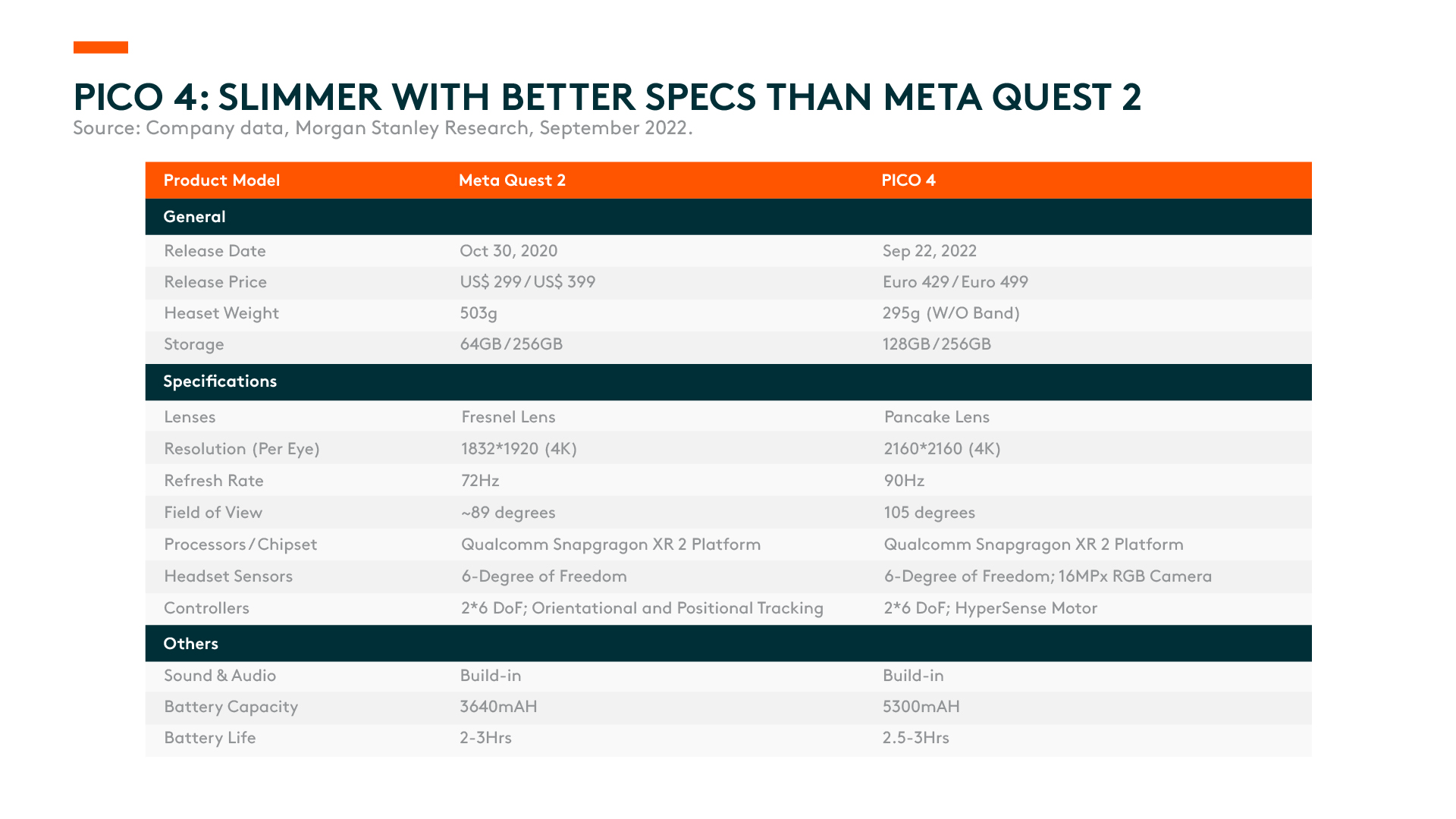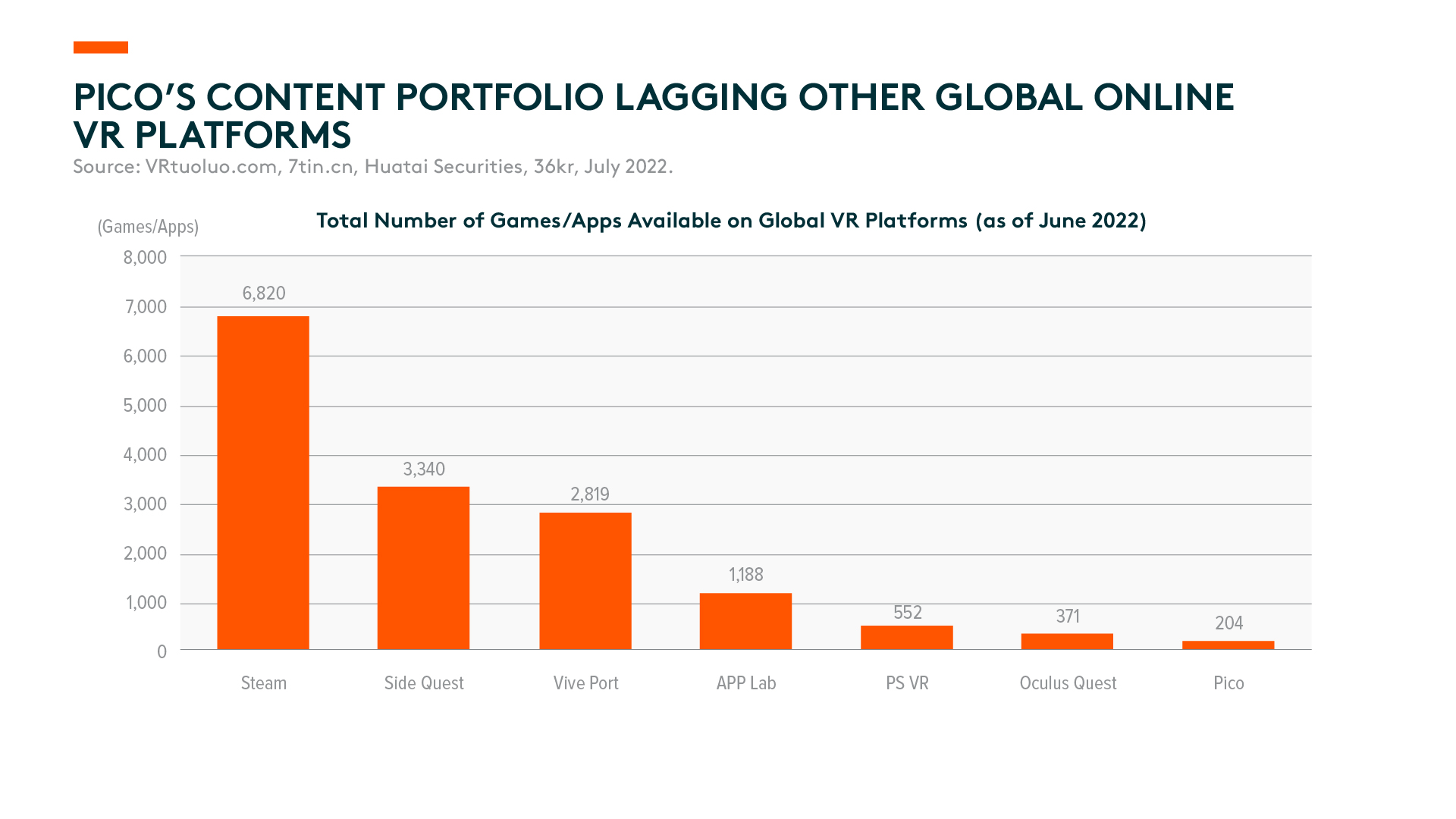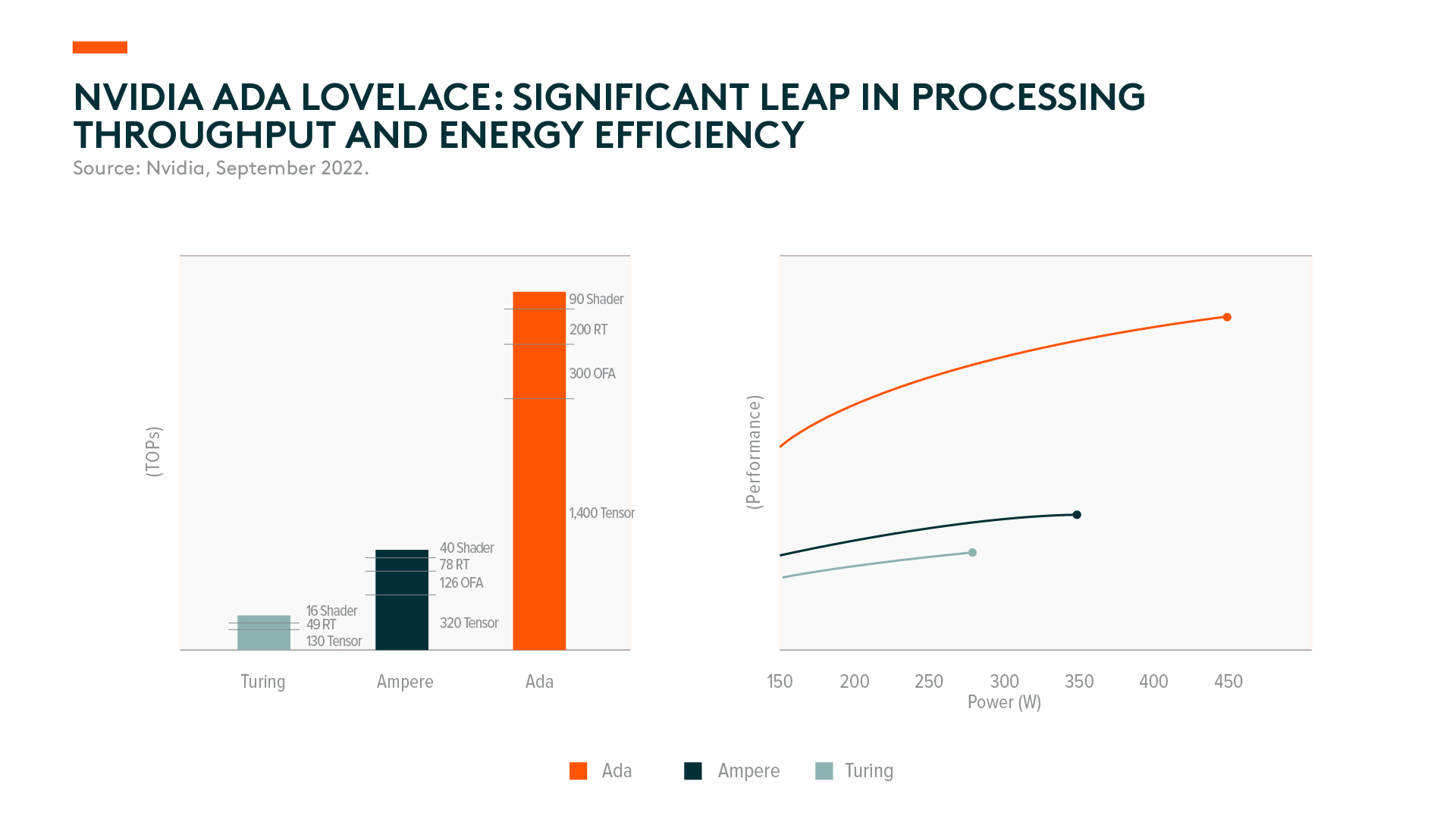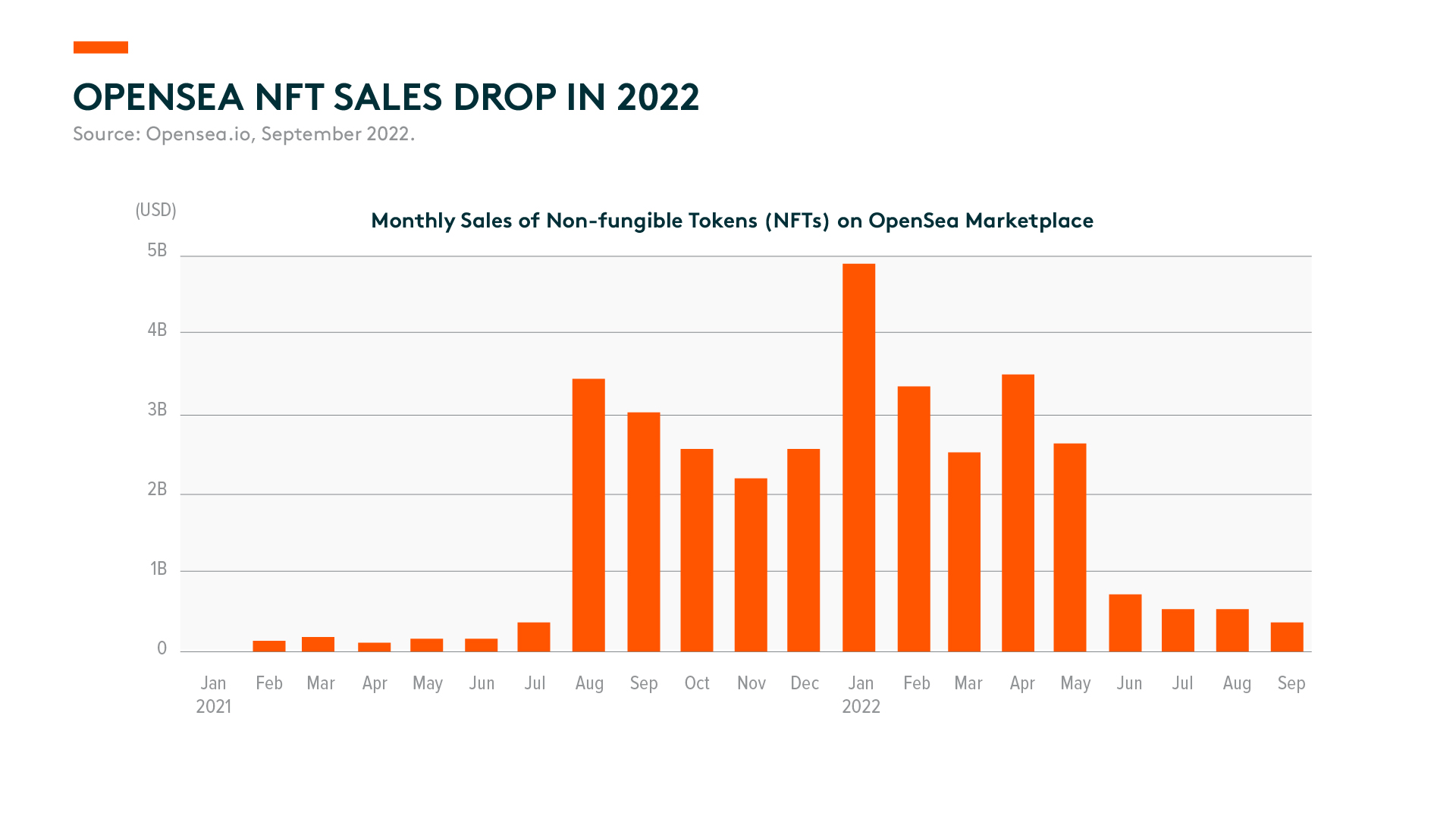META Active: Q3 2022 Review
Listen
Despite the challenging macroeconomic conditions in Q3 2022, virtual reality (VR) companies have continued to advance their products with innovative hardware upgrades. The content ecosystem is also expanding, moving beyond online gaming to incorporate more applications and VR-driven social content. In addition, Nvidia’s next-generation graphics processing units (GPUs) and extended reality software show exciting potential to improve software development support and content creation in VR/AR. Elsewhere, the non-fungible token (NFT) market is facing a slowdown, but we remain optimistic about the sector given the surge in NFT-owning accounts.
Key Takeaways
- New VR devices, such as PICO 4, boast an impressive array of hardware upgrades, which we believe will continue to drive growth for hardware penetration. Beyond VR, Apple’s upcoming mixed reality (MR) product launch is expected to set a new industry standard for devices of its kind.
- VR companies are also expanding their content ecosystems. Pico, for example, has released a new user interface and is looking to provide more content beyond games, such as fitness and live streaming.
- In other hardware news, Nvidia has revealed their next-generation GPUs, utilising their new Ada Lovelace GPU architecture, which delivers a transformative leap in computational performance. Additionally, the introduction of the Omniverse software will improve the software development support in VR/AR and provide a digital platform for industries that will enable the metaverse.
- Meanwhile, global online game grossing continues to decline post-reopening due to less time/dollars spent online. The NFT market has also faced a slowdown over the last quarter, in line with the worsening macroeconomic environment. However, interest in NFTs is still rising, as evidenced by the growing number of accounts holding NFTs.
New VR Device Launches to Boost Penetration
As industry leaders and supply chain companies work through different challenges and constraints in virtual reality (VR) and augmented reality (AR) technology, VR/AR devices are entering a phase of rapid improvement in hardware design and performance. We see an exciting pipeline of upcoming product launches, starting with the launch of PICO 4 by Pico, the VR headset subsidiary of ByteDance. In addition, Meta will launch the Quest Pro in Q4 2022, and Sony will ship its PlayStation VR2 in early 2023.
Key upgrades in the PICO 4 include:
- Pancake lens: The device adopts a pancake lens, which allows for a more compact form factor. Light bounces back and forth between the curved surfaces with polarisation-dependent coating, requiring a shorter physical distance between the components. Even with a much larger battery at 5,300mAh vs 3,640mAh on the Quest 2, the PICO 4 is 208 grams lighter. However, the pancake lens has been an expensive solution to manufacture. With Pico offering the pancake lens solution at a price point of US$425, this should add to the industry’s efforts to ramp up hardware penetration.
- Motorised inter-pupillary distance (IPD) adjustments: Each person has a slightly different distance between their eyes, also known as the IPD. If a headset’s lenses aren’t closely aligned with your eyes, the image can be blurry and even cause eye strain. PICO 4’s lenses are “stepless” and motorized, allowing users to set an exact IPD between 62-72mm from within the VR.
- Display: The headset has a 105-degree field of view, providing a more immersive experience. The two 2.56-inch LCD displays provide 2K resolution per eye at 1,200 pixels per inch (PPI). The PICO 4 also has a dedicated 5K RGB camera in the center for color pass-through.
Beyond VR, we expect Apple to launch its first-generation mixed-reality (MR) product in 2023. The pricing for this first-generation device will be relatively high as Apple focuses on enabling the developer community to create content on its new MR platform. This is a significant shift as Apple will introduce a new operating system (OS) on top of its mobile and PC OS. Apple already provides several frameworks like ARKit and RealityKit for developers to build AR software on iOS devices, providing a starting point for software development on the new MR platform. Given Apple is the industry benchmark in hardware and system design, we believe this first-generation MR product will set the standard for other companies to follow.
PICO: Expanding Content Ecosystem
In tandem with the hardware upgrades, Pico has released its latest OS, PICO OS 5.0, with a better user interface (UI) design and experience. The latest upgrade allows users to switch windows more quickly in multi-tasking use cases, enhances its social features, introduces instant messaging, includes screen projecting and remote assistance, and enables users to create their own avatars. In addition, the new UI incorporates a more comprehensive content portfolio. However, compared to other global online VR content platforms, Pico is currently lagging in the total number of games/apps available.
To further expand the content ecosystem and enrich the experience of its devices, Pico has established an overseas VR gaming studio to develop VR games. Meanwhile, ByteDance has internally allocated lots of resources to support the development and monetization of content. Additionally, Pico is trying to differentiate from its peers by providing more content beyond games, such as fitness, online videos, live streaming, and immersive workplace/virtual office. For fitness, the Pico Fitness App can track exercise time and calories burned in VR and sync users’ data to the Apple Health app.
In the first half of 2022, Pico launched ‘PICO Video’ and established partnerships with more than 30 VR content companies, Hollywood studios, and top domestic streaming media platforms. In the second half of the year, the company will hold the first VR virtual idol concert for the virtual idol girl group ‘A-Soul’. Pico also recently launched a content creator incentive program to support leading companies specializing in VR app development, VR content creation, and VR technology companies.
Nvidia Introduces Next-Generation GPUs, New Architecture, and Extended Reality (XR) Software
Nvidia introduces the beta release of Omniverse XR to improve the software development support in VR/AR. The growing developer ecosystem in VR/AR will drive better content on various platforms, creating a virtuous cycle. The new XR app is an immersive spatial computing reference application that enables users to interactively assemble, light, and navigate Omniverse scenes in real-time. This allows creators and developers to drop into 3D scenes in VR and AR with full ray tracing without pre-processing and to collaborate via multi-device streaming support. Ray tracing is the technique used to model light transport and is a key element in creating realistic simulations.
Advancements in graphics processing units (GPUs) support better performance in graphics, computing, and AI workloads, which are crucial to enable the next-generation Metaverse experience. Nvidia announced its first higher-end GPUs based on its new Ada Lovelace architecture. Specialized for deep learning matrix multiply and accumulate math operations, the new fourth-generation Tensor Cores accelerate more data types and deliver more than two times the throughput for tensor matrix operations compared to the previous generation. In addition, third-generation RT Cores deliver up to two times the ray tracing performance over the previous generation.
Gaming and NFT Face Near-Term Slow Down
The global online content and entertainment space remains quiet going into 4Q22. Global online game grossing continues its year-over-year decline mainly due to reopening, which translates into less time/dollars spent online. There were fewer hit games released during the quarter (including both non-VR and VR games), which also led to a weakness in overall industry revenue growth.
Meanwhile, the non-fungible token (NFT) market momentum continues to weaken, as NFT sales were down ~60% in 3Q22 compared to the previous quarter, according to DappRadar. While the nascent NFT market benefited from cryptocurrency price gains and high-risk appetite among investors in 2021, these conditions have significantly changed given the continuously worsening global macro economy and rising interest rates. Nevertheless, despite the near-term challenges and lower trading volumes, the interest in digital collectibles is still increasing. According to CoinTelegraph, the number of accounts owning an NFT has surged from 3.36 million earlier this year to 6.14 million in September. In addition, many fashion brands have released NFT products and created digital wearables.





